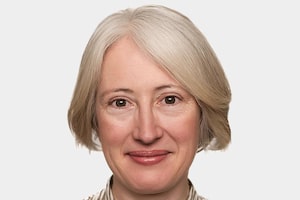A portion of the 1911 census.
In 1911, census data was collected by enumerators, who walked from house to house, knocking on each door. For each person in Canada, they collected just one line of information. Name, address, sex, relationship to household head. Date and place of birth. Racial or tribal origin, nationality and religion. Occupation, trade or means of living. Earnings, education, language and -- for reasons that no doubt seemed important at the time -- insurance coverage.
The Canadian and provincial censuses up to 1911 are now available on-line, as are censuses from the U.K., the U.S. and other countries.
A census form can bring your own personal history to life. No other kind of record will tell you how your family lived -- did the kids stay at home until they were thirty? Were your ancestors servants, or did they have servants? Were they rich or poor, educated or not?
That's the reason I happily filled out my census form and answered yes to the question about releasing personal information. It's a gift to my great-grandchildren.
But will my great grand-children care?
Most of the questions on the 1911 census are now asked on the new, voluntary National Household Survey. It will be sent out to about 4.5 million households in about four weeks time. If you're one of those lucky households, you have a chance to leave a footprint, a time capsule, for future generations to find.
A typical Canadian, however, only has an opportunity to fill out the mandatory, short form census. It starts out by collecting the same information as the 1911 census – name, address, sex, relationship to "person 1" (households do not have heads anymore), age and date of birth.
The government needs this information to function effectively. For example, federal–provincial transfers for health care, education, and so on are based on the number of people in each province. The census is the way governments know how many people there are. Or, to take another example, our democracy is based on representation by population. Census information is used to draw up electoral boundaries between ridings. Basic demographic information is fundamental to the functioning of democracy.
The short-form census no longer asks about racial origin, nationality and religion, nor does it ask about occupation, earnings, and education.
Instead, the mandatory, short form census asks:
• Can this person speak English or French well enough to conduct a conversation?
• What language does this person speak most often at home?
• What is the language that this person first learned at home in childhood and still understands?
Statistics Canada explains: these questions are asked "to determine the need for language services in English and French according to the Official Languages Act, and are used to implement programs that protect the rights of Canadians under the Canadian Charter of Rights and Freedoms."
The U.S. short-form census is the same length as the Canadian census. But it asks a different set of questions. There are no questions about language. Instead, the U.S. census asks: Is the home owned or rented? Is each person of Hispanic, Latino or Spanish origin? What is each person's race? The information collected is used to implement voter rights and civil rights legislation.
The questions asked in the census reveal what we, as a country, consider most important. In Canada, it's the delicate balance between French and English.
Follow Economy Lab on twitter
 Frances Woolley
Frances Woolley